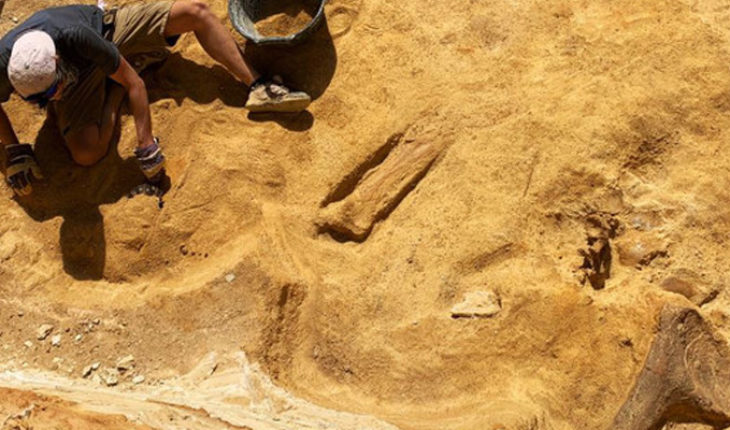Photography/Sinc Agency
Spaino.- Just over 100 km from Madrid, not far from the A-2 motorway, it is difficult to imagine that they grazed large sauropods and swam marine reptiles and primitive crocodiles in tropical coastal waters. They did it about 95 million years ago, at the beginning of the Late Cretaceous, in what is now Algora, Guadalajara.
The fauna of Algora was very poorly known, as it lived in a period of which there is little information available for the whole of Europe
During a geology student excursion in the surroundings of the site, more than 25 years ago, one of the students found in isolation a small carnivorous dinosaur tooth. Despite the exceptional finding, interest in this fossil went unnoticed until six years ago, when a researcher from the National University of Distance Education (UNED) noticed this discovery.
Since then, the UNED Evolutionary Biology Group has conducted a first paleontological intervention in 2016, together with other Spanish and foreign experts, and has just finished a second campaign in which more than 400 fossils have been discovered very well crocodiles, fish, plesiosaurs, turtles and titanosaurs, several of which could be new species for science.
“The fauna of Algora was very poorly known, since it lived in a period of which there is little information available for the whole of Europe, but that it is essential to know how the establishment of the last faunas with dinosaurs and other reptiles occurred on this continent,” notes Sinc Adam Pérez García, lead researcher of the project.
The unique site not only completes information about the latest dinosaur-dominated ecosystems in Europe, but stands out for the abundance of their fossils, their preservation and allows to identify poorly known species or new vertebrates freshwater, coastal seafarers, and open-sea animals.
Scientists specifically emphasize the presence of tortoises of the genus Algorachelus, of which there is still much to know and which motivated in part the project promoted by the Vice Council of Culture of the Concierge of Education, Culture and Sports of Castilla-La Stain.
The Cretaceous fauna of Guadalajara
“Knowledge about Algorachelus can be radically improved, thanks to the discovery of numerous complete shells, both from juvenile individuals and adults, but also by the largest collection of skulls in Europe and one of the largest in the world of the group to which this tortoise belongs,” says Pérez García.
The successful excavation also shows the presence of various forms of crocodiles, of which very little information was available
In addition to turtles, the campaign has brought to light representatives of other previously ill-known lineages. “We have identified a greater diversity of fish than we have considered so far,” says Sinc, the scientist who has been able to recognize remains of fish of African origin.
This finding supports the hypothesis of the replacement of several European vertebrates for fauna from the southern continental mass, called Gondwana and formed by Africa and South America. The first example of this dispersal was the pilgrim Algorachelus tortoise, from what was now Africa and whose remains were found during the first campaign in Algora.
The successful excavation also shows the presence of various forms of crocodiles, of which very little information was available. “The new material recognizes that some lineages of primitive crocodiles still survived in the early Late Cretaceous, along with forms attributable to more modern lineages, which ended up completely replacing them several million years later”, paleontologist says.
A partial skeleton of titanosaur
The environment of Algora 95 million years ago was also the habitat of herbivorous dinosaurs. Far from being a desert environment as thought until now, the region was actually a tropical coastal area, with large forests, according to the great biodiversity of species discovered.
“The possibility that the sauropod of Algora is a new species is elevated,” says paleontologist
The group has in fact discovered a partial skeleton – vertebrae, elements of the waists and limbs – of a herbivore of relative small size, which could correspond to a new species of sauropod.
“He would be the oldest European representative of titanosaurs, who were one of the most abundant and diverse groups of dinosaurs in the deposits of the final part of the Cretaceous on this continent,” says Adam Pérez García.
Analysis of fossils will now allow to know the origin of European members of this lineage of sauropods, very common at the end of the period dominated by dinosaurs. “The possibility that the Algora sauropod is a new species is high, and the same may be elevated with representatives of other groups found during this excavation,” concludes the researcher.
Source: Sinc
translated from Spanish: Dinosaurs and crocodiles lived in Spain millions of years ago
September 6, 2019 |





